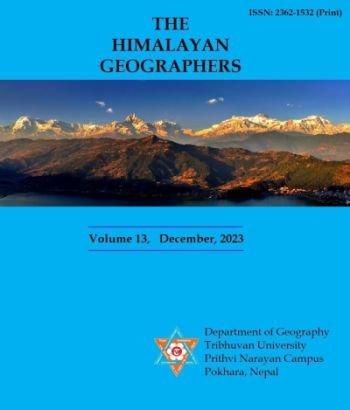Valuing Access to Mountain Protected Areas in Nepal: The case of Annapurna Conservation Area
DOI:
https://doi.org/10.3126/thg.v13i1.71350Keywords:
Annapurna Conservation Area, contingent valuation, protected area, willingness to payAbstract
Tourism is a profound source of foreign earnings all over the world and supports the sustainable management of protected areas as a market-driven solution catering to the increasing number of discriminating travellers seeking to explore and enjoy the natural environment. The financial sustainability of the protected areas is critical for improving their effectiveness in conserving biodiversity. Contingent valuation surveys were administered to 300 non-South Asian foreign visitors (NSAF), South Asian foreign visitors (SAF) and domestic visitors to the Annapurna Conservation Area, during October and November of 2019. The logit regression results suggested that bid amount, income, visitor satisfaction, membership of an environmental organization, education and the environmental concern score are the major determinants affecting the willingness to pay (WTP). The mean willingness to pay for the entrance fee at Annapurna Conservation Area was found to be US$ 28.23 for NSAF, and US$ 18.25 for SAF which aren't significantly more than the present entry charges for Annapurna Conservation Area (ACA). Through this research, it is suggested that the present entry costs remain the same, suggesting that other mountain-protected areas in Nepal should also continue to charge the same amount as the entry fee.
Downloads
Downloads
Published
How to Cite
Issue
Section
License
Copyright (c) 2023 The Author(s)

This work is licensed under a Creative Commons Attribution-NonCommercial 4.0 International License.
This license enables reusers to distribute, remix, adapt, and build upon the material in any medium or format for noncommercial purposes only, and only so long as attribution is given to the creator.




